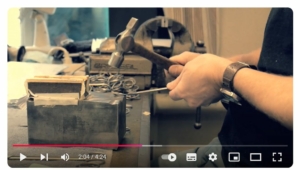In recent years, growing numbers of healthcare providers have been accused of “greenwashing”.
In this post we’ll explore what greenwashing in healthcare is, and what it looks like. We’ll also explore some ways you can ensure your environmental performance delivers in practice, and not just on paper.
What is Greenwashing?
“Greenwashing” essentially means that there’s a disconnect between your environmental policies and your environmental practices. It means that you might describe your services and your operations as environmentally responsible and sustainable, when in reality your practices are not nearly as green as they seem.
Why Does Greenwashing Happen?
Greenwashing isn’t always intentional. Sometimes it can happen by accident, when managers overlook certain processes, or when staff members or service users do not properly follow certain procedures.
But increasingly, people want to know that the services they use are taking steps to address the environmental impact of their operations. So if you claim to be green, then you must ensure you deliver on your promises. Otherwise, you could be misleading the public. And in healthcare settings, overlooking the environmental impact of certain processes can also carry some health risks.
What Does Greenwashing Look Like in Healthcare?
Your healthcare setting might set an environmental policy, and you might make certain declarations, and set certain aims, in your internal documents and communications. You might also communicate your environmental goals to your staff and patients, via onsite posters, leaflets, brochures, and even press releases.
If your environmental impact does not meet the standards you set in these materials, then you might be accused of greenwashing.
Examples of Greenwashing in Healthcare
How Can Healthcare Take Effective Environmental Action?
The need for effective infection prevention and control can make going green particularly challenging for healthcare settings. For example, how can a hospital commit to reducing waste when the Standard Infection Control Precautions advise using single-use items as often as possible? How can a care home embrace recycling when PPE best practice often advises disposing of items immediately after use?
The answer – and it is by no means an easy one – is to review all of your operations, from start to finish, and look for any areas where you might make any improvements to your environmental performance. And you need to do this without compromising on your operational efficiency, or your infection prevention and control processes.
Once you have reviewed your processes and established some possible areas of improvement, you need to communicate these to all staff at all levels. Your staff will be accustomed to doing things in a certain way. They might need some additional training if they need to get used to a greener way to complete a certain process.
Case Study – The Green Theatre Checklist
For some examples of how healthcare teams can improve their environmental performance without compromising on care standards or safety, take a look at the Green Theatre Checklist. This is a set of guidelines for how operating theatre teams can address their carbon footprints and work towards sustainability in surgery.
It recommends actions for every stage of surgery, from anaesthetic care to postoperative. Guidelines include:
- Sourcing materials as locally as possible, to cut down on carbon emissions during transit.
- Using “greener” substances wherever possible, such as sevoflurane instead of isoflurane.
- Switching to reusable equipment wherever possible. Your PPE may always have to be single-use. But other equipment, such as underbody heaters, slide sheets, and trays, can be reusable.
- Minimise waste. For example, follow a policy of “don’t open it unless you need it” when it comes to drugs and single-use equipment.
- Reduce your water and energy consumption. This could include switching to automatic or peddle controlled taps. And when it comes to hand hygiene, adopt a “rub not scrub” approach: A water scrub to start the day, and alcohol rub for all subsequent procedures.
You can access and download the full Green Theatre Checklist.
Case Study – “Toxic Air at the Door of the NHS.”
The Toxic Air at the Door of the NHS report revealed that over 2,000 UK health centres are located in areas where the atmospheric concentration of particulate matter exceeds the World Health Organization’s recommended limits. This accounts for around 25% of all hospitals in the UK.
Particulate matter – including PM2.5 and PM10 – is a hazardous air pollutant that can contribute to, or worsen, a number of health conditions when inhaled. Road traffic is a major source of particulate matter. According to one study, over 20,000 respiratory and cardiovascular hospital admissions each year can be linked to air pollution.
Hospitals and healthcare settings might address this problem through setting strict onsite speed limits, and through banning smoking on the premises. Though as we suggested earlier, unless you also take measures to address the air quality inside your healthcare setting, then you might reasonably be accused of greenwashing.
There are two strategies you can adopt to improve the onsite air quality throughout your setting:
We Can Help You Deliver On Your Environmental Policies
At Cairn Technology, we can advise on switching to products and services that will help you cut down on unnecessary waste without compromising on your infection control or your operational efficiency.
We have a wide selection of reusable high-quality surgical instruments. Make the switch from single-use instruments and help to cut down on the waste associated with their mass production and disposal.
Take a look at our super absorbent floor mats, which cut down on the waste associated with higher volume production and waste of mats with much lower absorbency, such as inco pads.
We can also provide specialist air quality monitoring services, and we stock a complete range of hospital-grade air purifiers.
Get in touch with our friendly team of expert consultants to discuss your requirements today.



